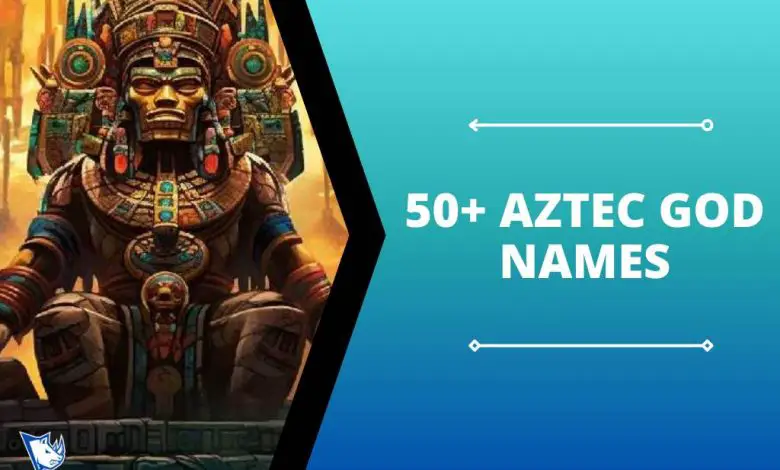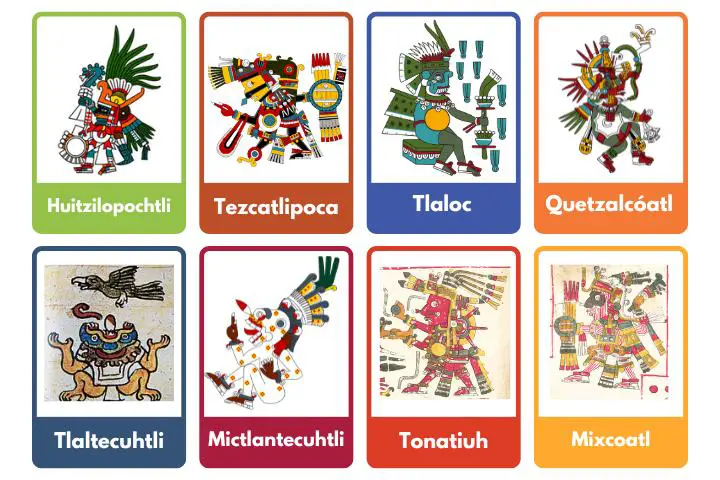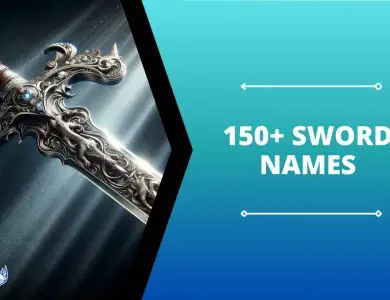50+ Aztec God Names: Aztec Mythology Unveiled

The Aztec culture was full of myths and spiritual beliefs, they believed in a bunch of gods and goddesses. These beings had control over different parts of life and nature. There was a strong sun god, also a goddess that helped with fertility, each god had a job for the Aztec people.
This blog lets you see the captivating world of Aztec god names. We will dive into the tales and symbols related to these old gods. Come with us on a trip through the past and myths, let’s discover the secrets of the Aztec gods.
Aztec God Names
Here are some popular Aztec God Names with short details about them.
Huitzilopochtli: The Aztec god of war, sun, and human sacrifice. He was one of the principal deities of the Aztecs and was often depicted with hummingbird attributes.
Quetzalcoatl: A major deity in Aztec religion, also known as the Feathered Serpent. He was associated with wind, air, and learning, and was often depicted with feathered wings.
Tezcatlipoca: A powerful god associated with many aspects of Aztec life including the night sky, the night winds, hurricanes, the north, and sorcery. He was also associated with war and rulership.
Tlaloc: The Aztec god of rain, water, and fertility. He was highly revered and feared because he controlled the life-giving rains. Tlaloc was often depicted with goggle-like eyes and fangs.
Xochiquetzal: The Aztec goddess of beauty, fertility, and love. She was associated with flowers, plants, and the arts, and she played a significant role in Aztec mythology as a symbol of fertility and feminine power.
Chalchiuhtlicue: The goddess of water, rivers, seas, streams, storms, and baptism. She was a significant deity in Aztec religion, associated with both life-giving water and destructive floods.
Mictlantecuhtli: The god of the dead and the ruler of Mictlan, the underworld in Aztec mythology. He was often depicted as a skeletal figure wearing a skull mask.
Tonatiuh: The Aztec sun god, often portrayed as a fierce warrior. Sacrificial victims were offered to him to ensure the sun’s continued journey across the sky.
Xipe Totec: The god of agriculture, vegetation, seasons, and rebirth. He was also associated with goldsmiths and silversmiths. Xipe Totec was often depicted wearing the flayed skin of a sacrificial victim, symbolizing the renewal of life and vegetation.

Tlaltecuhtli: A primordial earth goddess in Aztec mythology, representing the feminine aspect of the earth. She was often depicted as a monstrous creature with features of both human and reptile.
Ehecatl: The god of wind, air, and breath. Ehecatl was often depicted as a feathered serpent or as an old man blowing wind from his mouth.
Xochipilli: The god of art, games, beauty, dance, flowers, and song. He was associated with love and pleasure, and worshipped through dance, music, and offerings of flowers.
Toci: A goddess of fertility, midwifery, and healing. She was often associated with childbirth and was revered as a protector of women and children.
Chantico: The goddess of hearth fires and volcanic activity. She was also associated with precious things like gold and was believed to protect the home.
Coatlicue: The mother of the gods and the goddess of earth, fertility, and agriculture. She was often depicted as a fearsome figure with a skirt made of serpents and a necklace of human hearts, skulls, and hands.
Xolotl: The god of lightning, fire, death, and deformities. He was also associated with the evening star and was believed to guide the souls of the dead to Mictlan.
Mixcoatl: The god of the hunt, war, and the Milky Way. He was associated with the stars and often depicted as a man carrying a bow and arrows.
Xiuhtecuhtli: The god of fire, time, and rulership. He was associated with the warmth of the sun and the fire that sustains life.
Itzpapalotl: A fearsome goddess of death, darkness, and obsidian. She was often depicted as a skeletal figure with butterfly or obsidian knife wings.
Ometecuhtli and Ometeotl: The primordial god and goddess who together represented duality and unity. They were the highest deities in the Aztec pantheon, often depicted as an androgynous figure.
Tlazolteotl: The goddess of purification, fertility, and childbirth. She was also associated with filth and was believed to cleanse sin through confession and penance.
Cihuacoatl: A goddess of fertility, childbirth, and motherhood. She was often associated with snakes and was believed to protect women during childbirth.
Chimalma: A goddess of fertility, motherhood, and creation. She was believed to have given birth to Quetzalcoatl and Xolotl.
Huixtocihuatl: The goddess of salt and salt water. She was often associated with purification rituals and was believed to cleanse and protect.
Chicomecoatl: The goddess of agriculture, sustenance, and maize. She was worshipped by farmers and associated with the harvest cycle.
Huehuecoyotl: The god of music, dance, mischief, and trickery. He was often depicted as a coyote and was associated with both positive and negative aspects of life.
Ometecuhtli: The god of duality and creation, often depicted alongside his female counterpart, Ometeotl. Together, they represented the primordial forces of the universe.
Macuilxochitl: The god of games, pleasure, dance, and flowers. He was associated with joy and festivities and worshipped through music, dance, and offerings of flowers.
Patecatl: The god of pulque, a traditional alcoholic beverage made from the agave plant. He was also associated with healing and medicinal plants.
Tlaltechutli: The god of terrestrial fire, volcanoes, and caves. He was believed to reside within the earth and was associated with the transformative power of fire.
Chicunaumictlan: The goddess of the nine levels of the underworld. She presided over the souls of the dead and was believed to guide them through the afterlife.
Tetlazaua: The god of caves, fertility, and water sources. He was often associated with underground rivers and was believed to protect caves and springs.
Opochtli: The god of fishing, hunting, and animal fertility. He was worshipped by fishermen and hunters and believed to provide abundance in hunting and fishing.
Opochtli-Mictlantecuhtli: A dual god representing both fertility and death. He was associated with the fertility of the earth and the underworld.
Mictlampa: The goddess of the darkness of caves and tunnels. She was believed to reside within the depths of the earth and was associated with death and rebirth.
Tecciztecatl: The god of the moon, fertility, and agriculture. He was often depicted as a rabbit and associated with the phases of the moon and agricultural cycles.
Yacatecuhtli: The god of commerce, travelers, and merchants. He was worshipped by traders and merchants and believed to protect travelers on their journeys.
Tlalchitonatiuh: The god of the earth and the sun. He was associated with fertility and agriculture and worshipped through rituals and offerings to ensure a successful harvest.
Teoyaomqui: The god of dead warriors and the souls of the slain. He was believed to accompany fallen warriors to the afterlife and preside over their spirits.
Tezcatzoncatl: The god of edible greens, vegetables, and domesticated animals. He was associated with agricultural fertility and worshipped by farmers and agriculturalists.
Also Read:
These additional gods represent various aspects of Aztec life, from agriculture and fertility to commerce and the underworld. If you’re interested in more details about any specific deity or have other questions, feel free to ask!



